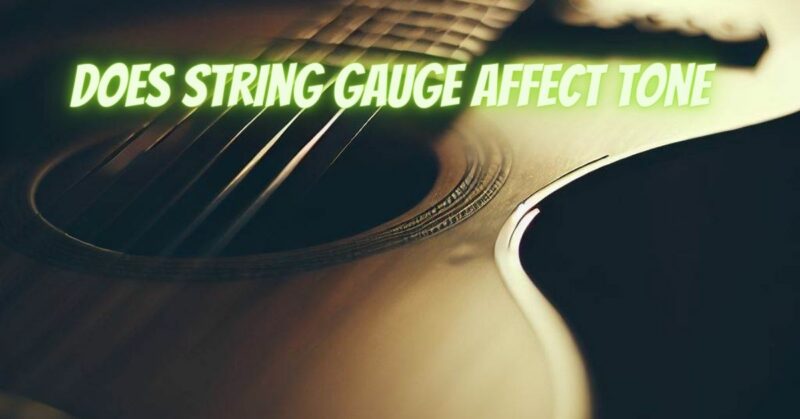The choice of string gauge is a critical decision for guitarists, as it directly impacts the instrument’s playability and, most notably, its tone. String gauge refers to the thickness of the strings, measured in thousandths of an inch. In this article, we’ll explore the intricate relationship between string gauge and guitar tone, shedding light on how this fundamental choice shapes the sonic character of the instrument.
1. The Basics of String Gauge
String gauge determines the tension and flexibility of the strings, influencing their response to your touch and the way they vibrate. Lighter gauges have lower tension and are easier to bend, while heavier gauges offer greater sustain and volume.
2. Brightness and Clarity
String gauge directly impacts the brightness and clarity of the guitar’s tone. Lighter gauge strings vibrate more freely and produce a brighter, crisper sound with enhanced harmonics. This tonal quality is well-suited for genres requiring articulate playing and intricate fingerstyle techniques.
3. Warmth and Depth
Heavier gauge strings tend to produce a warmer and more resonant tone with richer low-end frequencies. The increased tension results in greater sustain and a more pronounced bass response, making them suitable for genres where a full-bodied sound is desired.
4. Playability and Ease of Bending
Lighter gauge strings are easier to bend, facilitating expressive techniques such as vibrato, bluesy bends, and intricate phrasing. Players who emphasize these techniques often prefer lighter gauges for their increased flexibility.
5. Dynamic Range
String gauge influences the dynamic range of the guitar’s sound. Lighter gauges offer a wider dynamic response to changes in picking intensity, making them well-suited for nuanced playing styles. Heavier gauges provide a more uniform response across dynamic levels.
6. Projection and Volume
Heavier gauge strings generally produce more volume and projection due to their increased tension. This can benefit players who require a strong presence in live settings or genres that demand powerful strumming.
7. Fingerstyle vs. Strumming
Different string gauges cater to specific playing styles. Fingerstyle players might gravitate towards lighter gauges for their expressive touch, while strummers may opt for heavier gauges for increased volume and a well-defined rhythm.
8. Finding Balance
It’s important to find the right balance between playability and tone. Lighter gauges offer ease of playability and expressiveness, while heavier gauges offer a deeper, fuller tone. Choosing the optimal gauge depends on your playing style, technique, and musical preferences.
9. Guitar Construction
The type of guitar also influences the impact of string gauge on tone. Acoustic and electric guitars may respond differently to the same string gauge due to their construction and design.
10. Personalization and Experimentation
Ultimately, the effect of string gauge on tone is subjective and personal. Experimenting with different gauges allows you to uncover the nuances of your instrument and find the balance that resonates with your playing style and sonic preferences.
String gauge is a powerful tool that allows guitarists to paint their sonic canvas with a unique palette of tones. The interplay between tension, flexibility, and tonal characteristics shapes the guitar’s sound in profound ways. By understanding how string gauge affects tone, you can make an informed choice that aligns with your playing style, genre, and sonic vision, allowing you to unlock the full potential of your instrument’s expressive capabilities.


